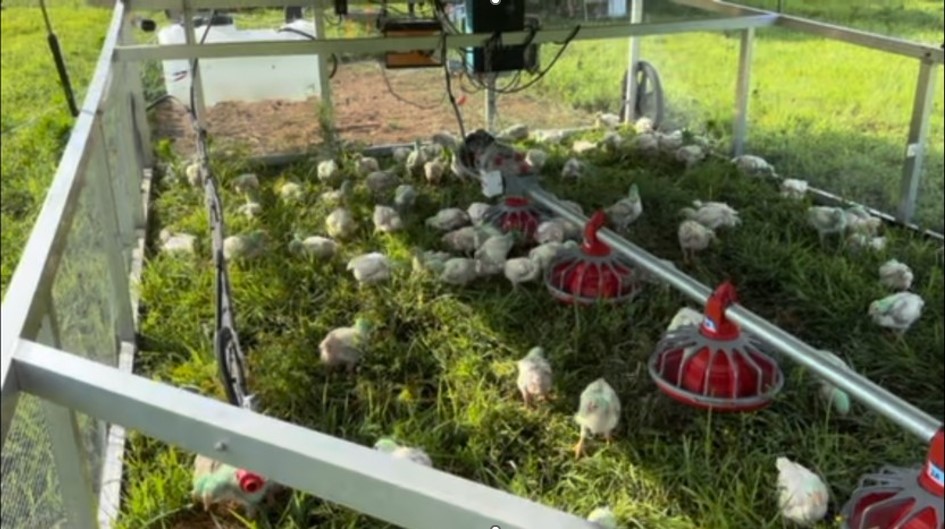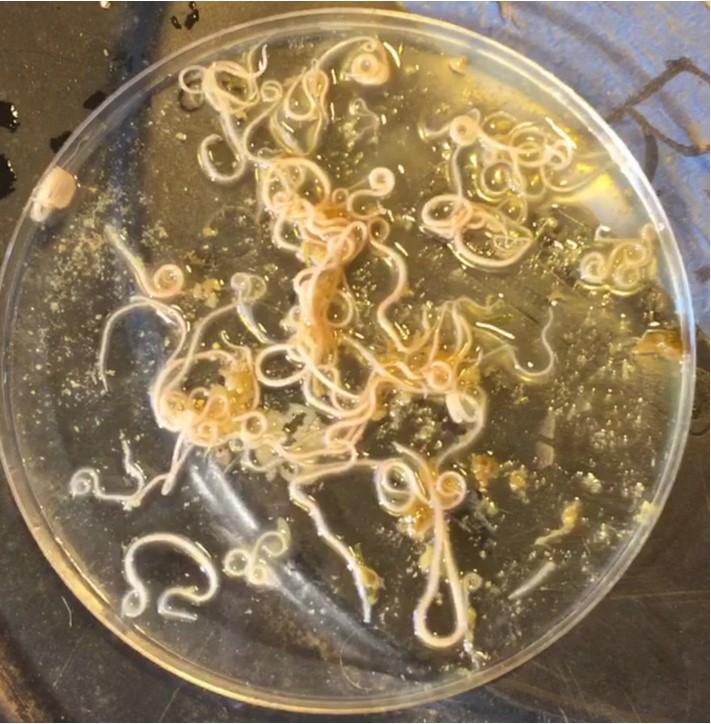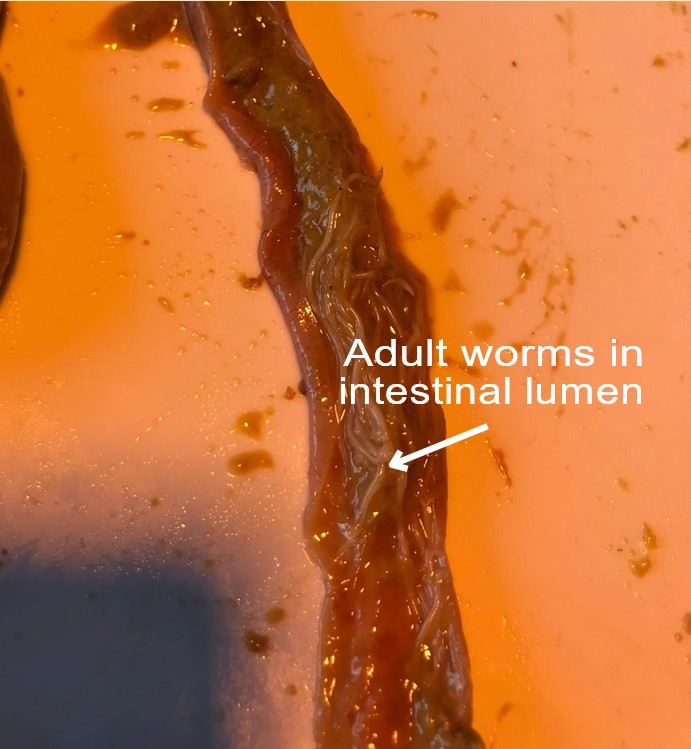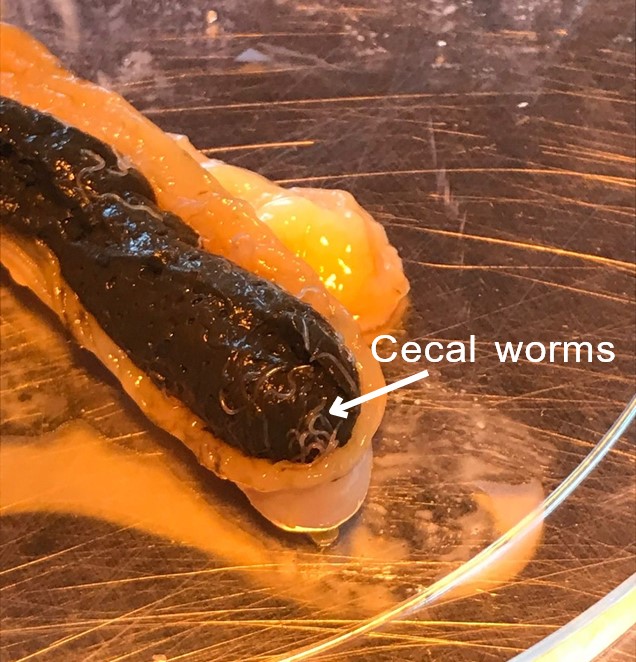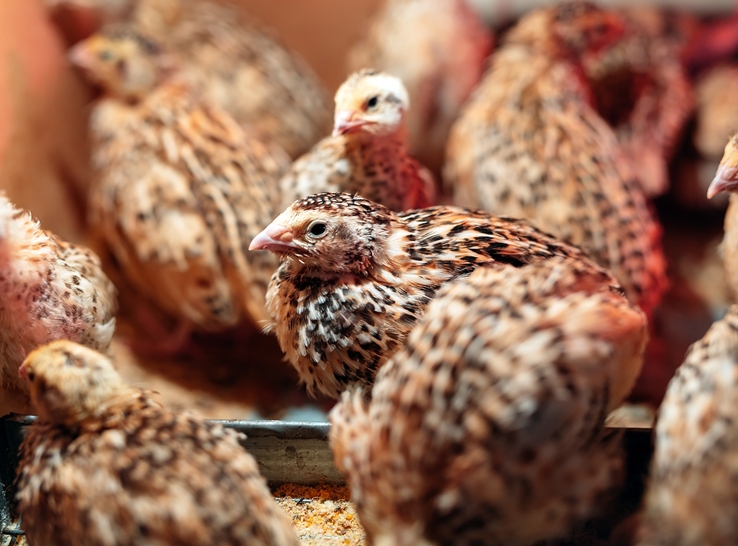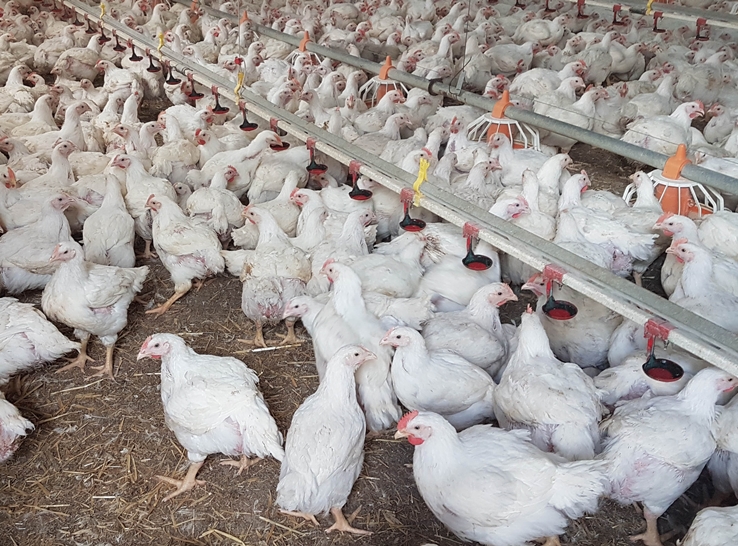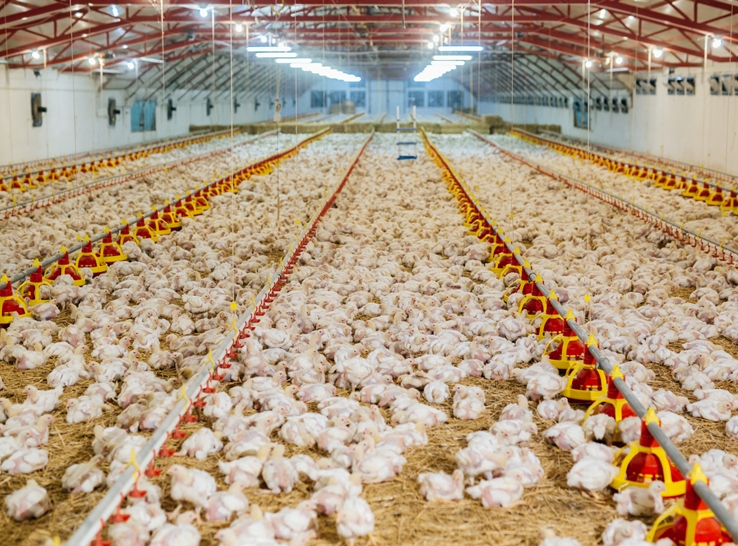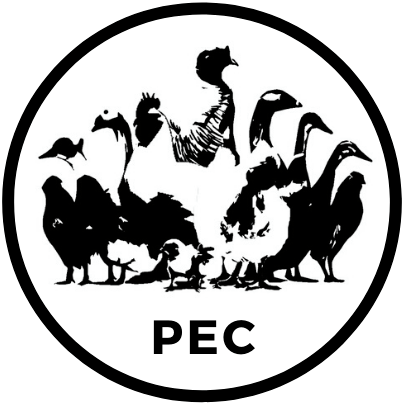By Prafulla Regmi, PhD
University of Georgia
In poultry farming, worms and protozoa represent the two primary classes of internal parasites that impact bird health, welfare, and productivity. While indoor-reared poultry typically avoid infestation from worms that require intermediate hosts, free-range birds are more susceptible. Interestingly, broilers tend to have less exposure due to their shorter growth cycles, as many nematodes require four weeks or more to reach maturity and produce infective eggs.
However, with the recent rise in the use of slow-growing lines for pasture-based and free-range broiler production, worm infestations could become a significant issue. Warmer weather also contributes to the rise in worm populations, as moisture and humidity create favorable conditions for parasite eggs to thrive. There are various worms and protozoa that can infect poultry such as roundworms (nematodes), flatworms (trematodes), tapeworms (cestodes), coccidia, histomonads etc. In this article, we will focus our discussion on roundworms.
Characteristics of Roundworms1
- Roundworms are spindle-shaped with tapered ends.
- The body of roundworms are covered by a cuticle layer which is often marked by transverse grooves.
- Roundworms have separate sexes. In some species (e.g., Ascaridia galli), both sexes appear similar whereas in others they look distinct (e.g., Tetrameres americana).
- Males can be identified by spicules, structures made of chitin, near the posterior end of their bodies.
Lifecycle of roundworms1,2
- Most poultry nematodes have a direct lifecycle without needing an intermediate host, though some use hosts like earthworms for egg dispersal.
- The lifecycle includes four distinct developmental stages. Adult worms release eggs containing non-infective L1 larvae which are shed in bird excreta into the environment.
- Suitable environmental conditions (high moisture and warmer temperatures) are required for the development of infective larvae (L3), which infect birds upon ingestion of eggs or larvae.
- After ingestion, infective larvae hatch and burrow into the small intestine’s mucosal lining, undergoing two additional molts. This stage causes the most damage to the host.
- Larvae mature into adult worms in the intestinal lumen.
Roundworms of importance in poultry
Ascaridia galli1
- Chickens are the primary host of this roundworm, but A. galli can also infect turkeys and ducks.
- The eggs embryonate within 2 weeks to a month in the environment and hatch after being ingested by a bird, releasing second-stage larvae. These larvae invade the small intestine before molting to the third stage, causing mild to moderate damage in the process.
- Adult worms grow up to 4.5 inches in length, and eggs can survive in the environment for more than a year.
Heterakis gallinarum1
- Small and white worms that can affect a variety of birds including chickens, turkeys, ducks, geese, and quail.
- This roundworm serves as a transport host for Histomonas meleagridis, a protozoan parasite that causes blackhead disease in turkeys.
- The lifecycle is direct, but eggs can be ingested by earthworms and survive for months before infecting birds.
- Infestation leads to inflammation, nodule formation in the ceca, and granulomas in the liver.
Signs and impacts of worm infestation
Understanding your flock’s behavior helps you recognize deviations from normal patterns. Signs of internal parasite infestation include:
- General sickness behaviors including dull feathers, listlessness, and social withdrawal.3
- Worms divert essential nutrients from the host through direct competition or by altering the host’s nutrient absorption processes resulting in reduced body weight and decreased performance (egg production).4
- Reduced body weight can be indicated by prominent keel, ribs, and leg bones.
- Anemia, characterized by pale combs and wattles.
- Visible adult worms in droppings, which suggests a severe infestation. Heavy infestations can cause ulcers in the intestines, making birds more susceptible to bacterial, viral, and protozoan infections.
- In some instances of severe worm infestation, complete intestinal blockages can occur.1
Diagnosis and Treatment
Diagnosis
- Presence of adult worms in fecal droppings.
- Examination of the fecal sample for the presence of parasite eggs. The morphology of the egg can help identify the worm species. Fecal examination can be carried out by submitting fresh excreta samples to veterinary diagnostic laboratories
Treatment
- Breaking the lifecycle of parasites by changing bedding, tilling the soil, and rotating pastures every 10 days.5
- Use of chemical deworming agents (also called anthelmintics) in consultation with a veterinarian3
- Fenbendazole is approved for use in poultry in the U.S. and is effective against adult roundworms and cecal worms (but not eggs).
- Other dewormers such as ivermectin, albendazole, levamisole, or piperazine may also be used. Proper withdrawal periods for egg or meat consumption should be followed after treatment.
Prevention
- Maintaining dry coops with exposure to sunlight can limit the lifespan of parasite eggs.
- Adding absorbent and permeable bedding (gravel, wood chips, sand) around chicken coops can facilitate quick drying of feces.6
- Quarantine new birds for up to 30 days before introducing them to the flock, ensuring two negative fecal samples during this period.
- Control insects and other pests (e.g., snails and slugs) that can serve as intermediate hosts for parasites by increasing sanitation and removing hiding spots.
- Use dewormers only as a therapeutic measure, that is, when worm infestation is deemed severe. Prophylactic use of chemical dewormers can lead to resistance among parasites.7
Resources
- McDougald, R. 2013. Internal parasites. In Diseases of Poultry, 13th Edition. Published by John Wiley & Sons, Inc. pp. 1117-1146.
- Shohana, N., S. A. Rony, M. H. Ali, M. S. Hossain, S. S. Labony, A. R. Dey, T. Farjana, M. Z. Alam, M. A. Alim, and Anisuzzaman. 2023. Ascaridia galli infection in chicken: Pathobiology and immunological orchestra. Immunity Inflammation & Disease. 11(9):e1001. doi: 10.1002/iid3.1001.
- Chasteen, , and K. Macklin. 2022. Backyard poultry worm control. The Alabama poultry extension system. ANR-2851. https://www.aces.edu/wp-content/uploads/2022/01/ANR- 2851_BackyardPoultryWormControl_011322L-G.pdf
- Koehler, S., A. Springer, N. Issel, S. Klinger, M. Wendt, G. Breves, and C. Strube. 2021. Ascaris suum Nutrient Uptake and Metabolic Release, and Modulation of Host Intestinal Nutrient Transport by Excretory-Secretory and Cuticle Antigens In Vitro. Pathogens. 10(11):1419. doi: 3390/pathogens10111419.
- How can the risk of disease and parasites be managed in cage-free layer hen housing systems? Updated on October 30, 2023. RSPCA Knowledgebase. https://kb.rspca.org.au/knowledge-base/how-can-the-risk-of-disease-and-parasites-be-managed-in-cage-free-layer-hen-housing-systems/
- Maurer, , E. Perler, Z. Amsler-Kepalaite, and A. Bieber. 2021. Ascarid eggs disappear faster from gravel and wood chips than from soil. British Poultry Science. 62:1.1-7. doi: 10.1080/00071668.2020.1812525.
- Yazwinski, T. A., C. A. Tucker, E. Wray, L. Jones, and F. D. Clark. 2013. Observations of benzimidazole efficacies against Ascaridia dissimilis, Ascaridia galli, and Heterakis gallinarum in naturally infected poultry. Journal of Applied Poultry Research. 22:1.75-79.
To view all issues of Poultry Press, click here.
Editor’s note: Content on Modern Poultry’s Industry Insights pages is provided and/or commissioned by our sponsors, who assume full responsibility for its accuracy and compliance.


